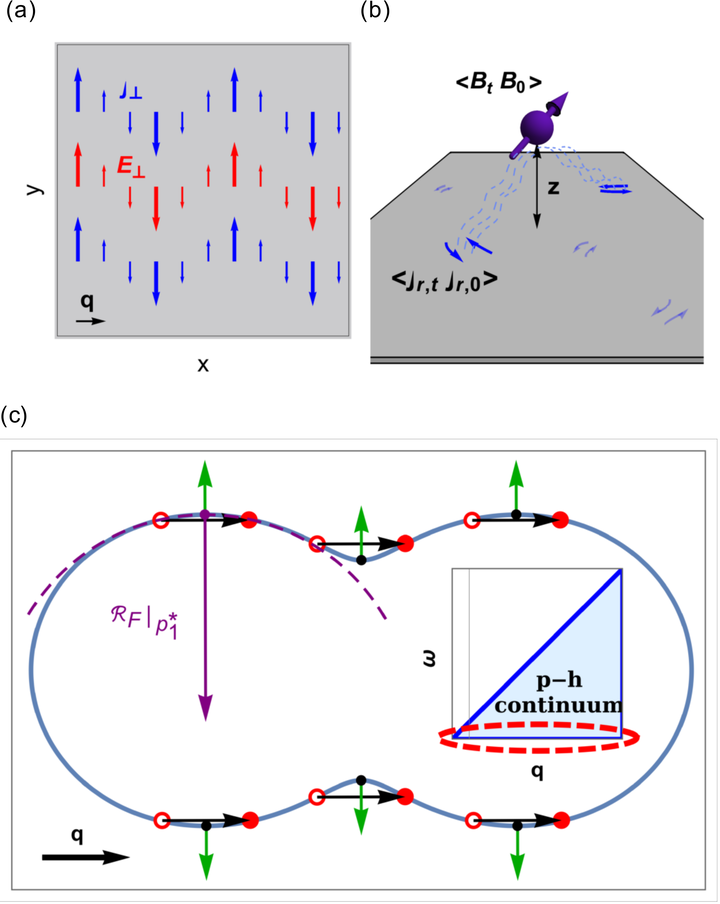The universal shear conductivity of Fermi liquids and spinon Fermi surface states and its detection via spin qubit noise magnetometry

Abstract
We demonstrate a remarkable property of metallic Fermi liquids: the transverse conductivity assumes a universal value in the quasi-static (ω → 0) limit for wavevectors q in the regime l≪q≪pF, where l is the mean free path and pF is the Fermi momentum. This value is (e^2/h)R/q in two dimensions (2D), where R measures the local radius of curvature of the Fermi surface in momentum space. Even more surprisingly, we find that U(1) spin liquids with a spinon Fermi surface have the same universal transverse conductivity. This means such spin liquids behave effectively as metals in this regime, even though they appear insulating in standard transport experiments. Moreover, we show that transverse current fluctuations result in a universal low-frequency magnetic noise that can be directly probed by a spin qubit, such as a nitrogen-vacancy center in diamond, placed at a distance z above of the 2D metal or spin liquid. Specifically the magnetic noise is given by C ω P/z, where P is the perimeter of the Fermi surface in momentum space and C is a combination of fundamental constants of nature. Therefore these observables are controlled purely by the geometry of the Fermi surface and are independent of kinematic details of the quasi-particles, such as their effective mass and interactions. This behavior can be used as a new technique to measure the size of the Fermi surface of metals and as a smoking gun probe to pinpoint the presence of the elusive spinon Fermi surface in two-dimensional systems. We estimate that this universal regime is within reach of current nitrogen-vacancy center spectroscopic techniques for several spinon Fermi surface candidate materials.